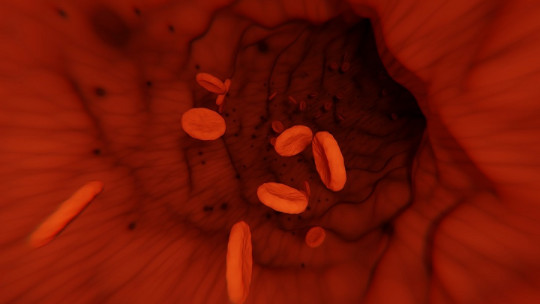Lactose intolerance is defined as a disorder that appears in the patient after ingesting a product containing lactose (a disaccharide that is present in dairy products).
It is a condition widely distributed in the world, since depending on the age group and ethnic group analyzed, up to 65% of the population can present it. It is interesting to know that the prevalence of this intolerance depends largely on the ethnicity of the individual, since African-American, Asian and Latino people are more predisposed to suffer from it. This is due to genetic factors that we will see later.
It is estimated that in the United States alone there are 30 to 50 million people who are lactose intolerant. It is not surprising, therefore, that countless research has been carried out regarding this pathology since its discovery in the sixties.
Join us on this review journey through the world of lactose intolerance, because This condition dates back to ancient times and presents certain characteristics that will surprise you.
The biological bases of lactose intolerance
Before evaluating the global situation of this disorder and how it is distributed throughout the population, we have to establish certain foundations regarding the causes of the disease.
As we have already said, lactose intolerance is a pathology that occurs when the affected individual cannot digest the sugars present in milk, which causes intestinal discomfort, abdominal bloating, gas and diarrhea.
It is interesting to know that Lactose is the primary carbohydrate that makes up milk (including that of human origin) Physiologically speaking, this disaccharide sugar cannot be absorbed by the intestine of our species, so we require the action of the enzyme lactase, a type of β-galactosidase that is responsible for breaking down this complex sugar into the monosaccharides glucose and galactose. .
This very important enzyme is synthesized in the brush borders of the villus cells (villi) in the small intestine , but unfortunately, it has been observed that in mammals there is a physiological decrease in lactase secretion with age. This responds to a clear mechanism at an evolutionary level: milk is the first food we eat at birth, but it is natural that over the years an adult individual resorts less and less to this source of nutrients that is so difficult to obtain in an non-industrialized world. For this reason, it is normal for the body to save energy by skipping the abundant production of this enzyme.
Guys
Lactase enzyme deficiency can be congenital or acquired over the years. Depending on the reason underlying the pathology, four types of lactose intolerance can be described:
1. Primary lactase deficiency
Is the most common cause of lactose intolerance Epidemiological studies reflect that, for example in Mexico, 30% of adults have this type of deficiency. Symptoms begin to appear after ingesting dairy products in adolescence or during adulthood, since the decrease in the lactase enzyme begins in childhood and continues throughout the individual’s life.
Although it is an acquired condition, it is essential to highlight that it is a genetic disorder, that is, there is a predisposition to it from birth of the patient, although it does not manifest itself during the first years of life. development.
2. Secondary lactase deficiency
Various diseases can damage the mucosa of the small intestine, which naturally results in a decrease in the production of the enzyme lactase Some pathologies that can trigger this secondary deficiency are gastroenteritis, celiac disease, Crohn’s disease, ulcerative colitis or the use of certain drugs and chemotherapy.
3. Other causes
We can list two other causes, which, although much less common, are present in the population. Congenital deficiency is a special case in which the newborn is not able to digest dairy products due to an autosomal recessive mutation
On the other hand, the deficiency during development finds its cause in infants who are born prematurely, since their small intestine has not completely formed and the lactose hydrolyzing activity is compromised.
How does it affect different populations in the world?
We are facing a topic of special interest for any epidemiologist, since few disorders manifest themselves with such a clear pattern depending on the ethnic group studied. As much as the concept of “race” in the human sphere is out of use due to the lack of consensus and moral application, The fact that our species reports genetic variations depending on the place of development and family lineage is undeniable
This is why, over the last 10,000 years, a series of mutations have been observed in certain population groups that allow their members to secrete lactase at appropriate levels during their adult life. The variant of the gene that encodes lactase activity is inherited in a dominant Mendelian manner, so it is not surprising that this resistance is very present in certain regions.
It is fascinating to know that This series of mutations have been promoted in populations that have been in intimate contact with dairy cattle for thousands of years of evolution. Due to this mechanism of natural selection, lactose intolerance is distributed as follows:
As we can see, this series of data shows that the consumption of dairy products over the centuries seems to be an important factor when quantifying lactase production in an adult individual. Is about a clear mechanism of natural selection from a theoretical point of view, since useful mutations are fixed throughout generations and the deleterious ones disappear.
On paper, theories based on a mechanism of natural selection make all the sense in the world: adults capable of correctly digesting cattle milk would obtain more calories with less effort than the rest, so it is to be expected that they would have more and better offspring in general and these genetic mutations will occur in the following generations.
Lactose intolerance in ancient times
Beyond the data of great interest presented above, scientific reports have shown that Lactose intolerance was already present in humans who lived in the Bronze Age, about 3000 years ago
The study of the DNA of the bone remains of 14 individuals belonging to this era allowed modern scientists to discover that, indeed, these human beings did not carry the relevant mutations for correct production of lactase in the adult individual.
Other studies indicate that The first European farmers did not have these mutations either 8,000 years ago The most accepted theory is that these genetic variations spread throughout the population as livestock farming was established as a general practice and dairy products were increasingly consumed. In any case, these new reports indicate that at least 6,000 years passed between the first ranchers and the widespread development of lactose resistance (at least in the populations analyzed), a fact that is very difficult to explain.
Summary
As we have seen, lactose intolerance It is a disorder that goes far beyond the patient’s gastrointestinal discomfort This is a pathology of great epidemiological and evolutionary interest, since it is very difficult to explain the fact that certain human groups began to drink milk regularly as adults if, clearly, they were not prepared for it as a species.
Studies like the ones we have shown you today raise more questions than answers, since explaining the exact origin of the mutations that allowed the development of lactose tolerance and its role in different societies is complex, to say the least. Of course, spaces like this only highlight the thousands of unknowns that the human body continues to contain.









